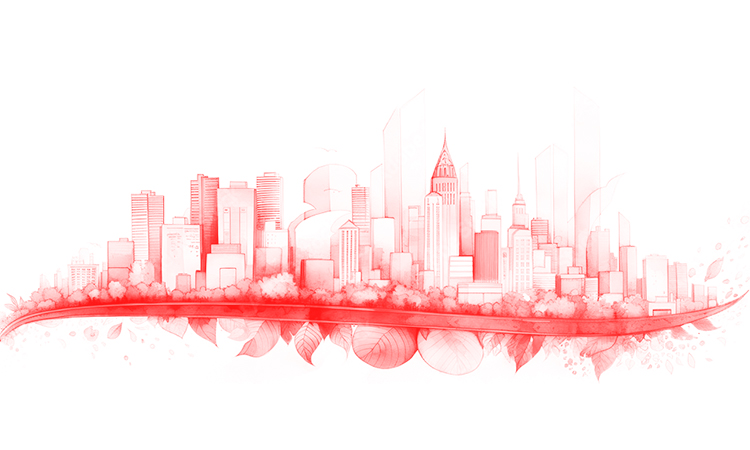The gilets jaunes – named after the yellow high-visibility vests worn by protesters – is an unstructured popular protest movement in France. It emerged a year ago, in October 2018, as a spontaneous protest, mainly mobilised via social media, against a rise in France’s energy consumption tax, which hit poor and rural workers, dependent on their cars for getting to work and school, particularly hard.
The high-vis ‘yellow vest’ has become the symbol and sign of the movement – not only worn by demonstrators, but also placed by supporters on car dashboards and rear window ledges.
This ongoing challenge to the French state has become the longest-running protest to hit postwar France.
A mass movement is born
Since 17 November 2018, the dispute has been focused around regular organised blockades of roads and roundabouts all over the country, and around demonstrations, known as ‘acts’, that take place every Saturday.
The protests mainly mobilise workers in rural and suburban areas, but they have also been organised in big cities, where several violent episodes have occurred following brutal police crack-downs – notably on the Avenue des Champs-Élysées in Paris.
Soon after its inception, the movement began to widen its outlook to embrace social and political demands as well as economic ones. Although most of these have been unreported, several thousand people have been injured during the course of the protests – some of them police, most of them protestors.
Faced with the size and anger of the movement, the government of President Emmanuel Macron was forced very early on to reverse its incendiary fuel tax rise. President Macron went on to launch what he called a ‘great national debate’, and then to announce further reforms, including a tax cut for low-paid workers and the re-indexation of their pensions.
But these concessions were not enough to put an end to the movement: the demonstrations, although less numerous than before, are continuing every week in various forms.
What is driving the movement?
The yellow vest movement has its roots in a questioning of economic policy (particularly cuts and austerity), a feeling of neglect amongst rural workers, and a growing mistrust of the way the country’s institutions are functioning. It was the first in a wave of anti-austerity movements that have been sweeping the globe this year.
The sense of neglect amongst certain sections of the population has been growing rapidly. Three out of ten French people today feel they are living in a neglected area, and this perception is stronger in areas outside the major cities. The sense of abandonment is both geographical and social, centring on problems related to employment, transportation and access to care.
From the late 2000s, the rate of abstention in elections has been continuously rising, reaching record levels today. President Macron, elected by less than half of the French electorate in 2017, is rapidly losing what little popularity he had. His statements, and the anti-worker economic measures he has implemented, show him to be far removed from the lives of most French workers, and especially from rural workers.
Some analysts consider that the yellow vest movement is a fitting riposte to Macron’s own ‘disruption’ in the French political field (he was, after all, propelled into office as a pro-EU technocrat with no party-political background, in order to save the French ruling class from the looming threat of an anti-EU government and to implement austerity measures).
According to Rémi Lefebvre, the yellow vests “represent the interests of social groups who no longer feel represented, being either invisible or denied. Traditional avenues of mediation are being bypassed by organisations or movements that are arising and establishing themselves using social networks, and which combine horizontal and vertical forms of organisation.”
The movement, he says, is both a symptom of and a new factor in the decline of the traditional political organisations of the working class.
In contrast to the established order, where protests are coordinated by trade unions, the yellow vest movement was launched and initially developed online, through social media (Facebook, Twitter, YouTube) and dedicated platforms. The main French unions, shaken by its sudden and unexpected (to them) emergence, did not support it at the start.
To this day, the movement is not structured like a political, trade union or association movement; Facebook groups are its activists’ preferred method of communication.
Shocking levels of police violence
Such brutality as the yellow vest protests have been met with has not been seen in France since the end of the Algerian war (1962).
Several protestors have lost hands or eyes as a result of police violence. The attack on Jerome Rodrigues, one of the movement’s leaders, has been widely denounced, forcing an investigation into the circumstances that led to the loss of his eye and other injuries.
Many demonstrators have been injured by weapons that are proscribed elsewhere in Europe, considered by their manufacturers to be weapons of war rather than of crowd control. These include defence ball launchers (known as flash balls) and sting ball grenades.
As of 21 January 2019, French left-wing newspaper Libération had counted 109 serious injuries to protestors and journalists, 78 from flash balls.
In a report published on 14 December 2018, Amnesty International denounced the “excessive use of force” being used by French police against peaceful protesters, as well as the abusive searches and arrests (including of street medics) and the “inhumane” conditions of 3 December in Mantes-la-Jolie, when 148 high school students were kept kneeling and handcuffed for several hours.
The UN and the European parliament have also condemned the excessive use of force.
According to Reporters Without Borders, some 90 journalists have been victims of police violence since the movement began.
Ten deaths have occurred at roadblock protests and an eleventh at an event that took place near the home of the victims. Including protestors and police, more than 4,000 people have been injured during the year of protest, some of them severely.
Of the ten people who died as a result of accidents at the roadblocks between 17 November and 21 December last year, three were yellow vests participating in the blockades and seven were drivers.
On 2 December 2018, Zineb Redouane, an 80-year-old woman from Marseilles, died in hospital from a cardiac arrest on the operating table after being hit in the face by a tear gas grenade as she closed the shutters of her fourth-floor apartment. According to witnesses, she said that she had been deliberately targeted by the police.
The family filed a manslaughter charge but the inquest was heavily criticised after the state failed to produce CCTV evidence that would have identified the policemen in question. The police also withheld evidence of the rifle grenade launchers being used against protestors at the demonstration and fed misinformation to the press.
The official inquest found that Ms Redouane’s heart attack had ‘no connection’ with the police attack on her, but a second autopsy, carried out at her family’s expense in her native Algeria, concluded that Zineb’s death was directly linked to the police shooting, resulting from ‘facial shock’ of the striking bullet.
The fall and rise of the working-class movement in France
Despite all this repression, however, the yellow vests continue to enjoy wide support amongst French workers.
As the historian Stéphane Sirot pointed out last December: “We have rarely seen such massive public support for a social movement. Often in France, there is a certain benevolence, a small majority of support for the social movements of workers, but this is unique in approaching 75 percent. It may be because we are looking at a type of support that has moved from benevolence to identification.” (Our emphasis)
It is no coincidence that the yellow vest movement emerged just as the acute crisis of representation by the French Communist party, the PCF, was reaching its height. Combined with the global retreat of the trade union movement, the retreat of the official ‘communist’ party from class politics and a working-class orientation has led – in France as elsewhere – to unprecedented ideological disarray on the ‘left’, including the ‘alternative’ left.
Nothing can be understood about the yellow vest movement, which has rapidly moved from a minor economic demand (abolition of the rise in fuel prices) to a wide but coherent mix of social (reduction of class inequalities, revival of local public services) and institutional (reconquest of popular sovereignty through the ‘citizens’ initiative referendum’) demands, without understanding this wioder context.
The fact is that since 1975, the PCF – that is to say, the old historically constituted vanguard of our people – has given up all its Marxist fundamentals. Over recent decades, successive congresses of the slowly mutating PCF have denuded the party of every one of its founding principles.
In 1976, at its 22nd congress, the PCF removed all reference to the dictatorship of the proletariat from its programme. In 1979, the party abandoned all references to Marxism Leninism and proletarian internationalism; in the place of which emerged references to a very reformist “step by step advance towards French socialism”.
In 1994, at its 28th congress, the PCF scratched from the statutes all reference to Marxism, socialism, the socialisation of the means of production, democratic centralism, and the leading role of the working class.
Having thus disconnected itself from all semblance of class struggle and the fight for socialism, the mutilated and distorted PCF put its efforts into misguiding the masses, twice subordinating itself to the Maastrichtian Socialist party’s loyal management governments of imperialist “European construction”.
This ‘Eurocommunist’ deviation has accelerated the decay of the party, which formerly had been opposed to the euro (campaigning for a rejection of the Maastricht treaty in 1992) and to the European project.
Today, the worker and peasant emblem of world communism has been dropped by the party in favour of a red star broken by an ‘e’, which says everything about the irreversible commitment of this re-imagined ‘communist’ party to the construction of imperialist Europe.
The same is true of the direction of France’s militant trade union confederation, the CGT. And it is in this atmosphere of ideological disintegration – where none of the political or trade union formations with media visibility dare to advocate a progressive French exit from the EU (Frexit); where all confederations, all parties (including La France insoumise and the PCF) defend an imaginary ‘social Europe’ on behalf of imperialism; and where all the ‘big’ movements supposedly opposed to capitalism have become heavily institutionalised – that the yellow vest movement has taken off as a real fighting movement of the working class.
A merging of the grass roots
This movement, the most sustained that France has known since 1968, has demonstrated a remarkable determination, despite the repression and media demonisation it has has suffered.
As the movement has progressed, the yellow vests have shown themselves to be both political (as in their affirmation of four fundamentally progressive lines of struggle: tax justice, social progress, direct democracy, and decent public services), and tactical (as in their revival of the revolutionary significance of the tricolour flag and the Marseillaise revolutionary hymn).
By contrast, and despite much more modest means than those of the established parties and institutional unions, the PRCF (Pole of Communist Revival in France) militants – and those of other progressive groups of comparable size – called even before the first yellow vest demonstration for support for this class movement (more precisely, for this popular front), encouraging workers and activists to participate in its debates without lecturing, so as to help its activists organise and develop their consciousness.
Many activists and local organisations of the CGT did the same. In Bordeaux, Paris, Montpellier, Lens, Marseilles, Nice, Lyons, Rennes, etc, fraternal ties have been consolidated between the yellow vests and these more ‘traditional’ class activists.
Of course, this process did not take place without some initial rejections tinged with anticommunism and anti-unionism, since the movement has also been ‘worked’ here and there by the right-wing National Rally (which is all the more reason to be present and active on the roundabouts: ideology deplores a vacuum!)
The aim of progressive participants in the movement has been to build on the just but limited demands of the yellow vests in order to encourage the fullest possible sociopolitical development – including the demand of a progressive Frexit, articulated with the perspective of a socialist revolution.
This demand helps to put all the others into context. After all, many of the movement’s economic demands are incompatible with continued EU membership, while social progress is impossible if French workers remain chained to the euro and to the domination of French and European capital.
To achieve the popular sovereignty workers are crying out for, it is necessary to leave the EU and Nato, to change France’s constitution and to reconstitute a powerful, democratised public sector.
Hence the demand of the progressive yellow vests for the ‘four exits’:
Exit the EU, exit the euro, exit Nato and exit capitalism!
*****
Aymeric Monville is international secretary of the Pole of Communist Revival in France (PRCF), director of Delga publishing house, and author of various books including Julian Assange en Danger de Mort (Julian Assange in Danger of Death), Delga, 2019.
(Sources used for this article: Gilets jaunes et rouges drapeaux by Georges Gastaud, Gilets Jaunes: Jacquerie ou Révolution, Le Temps des Cerises, 2019. Also Wikipedia France.)












